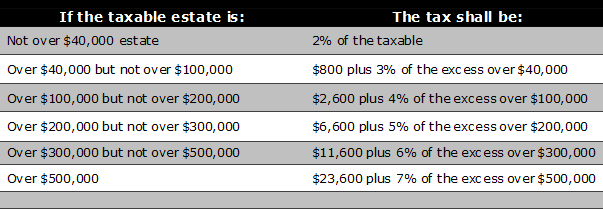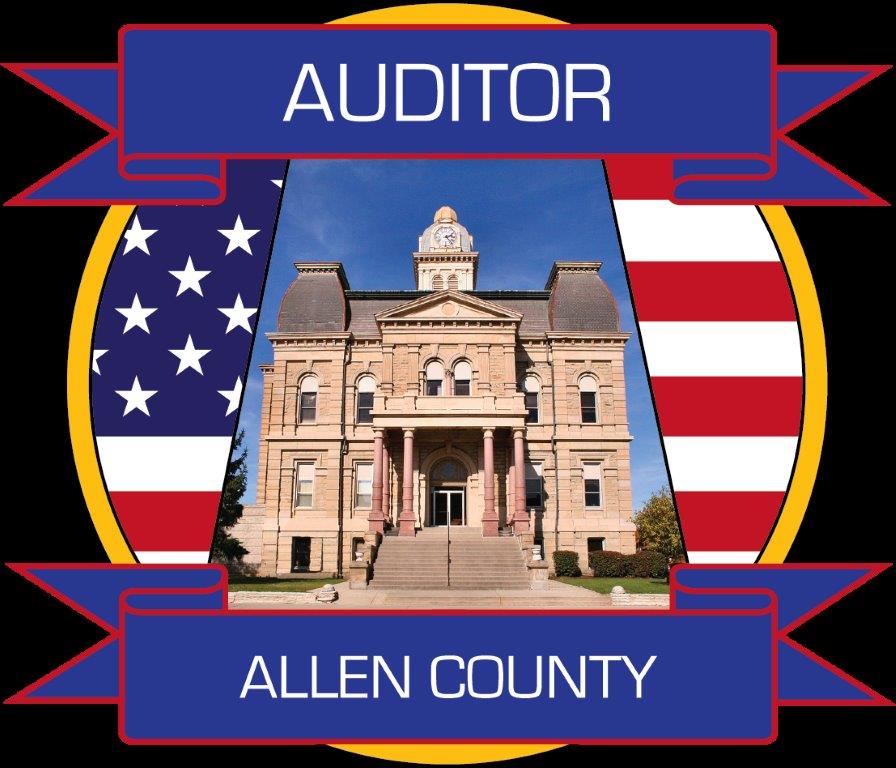Estate Tax
Understanding Estate Tax
The Auditor’s Office serves as an agent for the State of Ohio in administering the estate tax. The Auditor is responsible for processing the Estate Tax returns of decedents who resided in Allen County.
In Ohio, an Estate Tax return is filed within nine months of a person’s date of death. The tax due is based on the net value of the decedent’s estate. The net value is based on the gross value minus the debts and administration expenses of the estate. The gross value is made up of all assets, such as real estate, bank accounts, stocks and bonds. The debts and administration expenses consist of items such as funeral costs, attorney and executor fees and outstanding bills in the name of the decedent. Ohio allows property to pass from one spouse to another without taxation.
The Auditor issues Consent to Transfer Property Forms for estates. These releases are issued only for assets and accounts with a value greater than $25,000. The form notifies the financial institution that it may transfer ownership of the asset. It also notifies the Department of Taxation that the estate and asset exist and that an estate tax return may be necessary.
Administrative Changes
Changes Effective January 1, 2001 Regardless of the Date of Death of the Decedent:
Safe deposit box inventory:
It is no longer required that the County Auditor’s Office conducts an inventory of safe deposit boxes upon the death of the owner, co-owner or any other person having access to the box. This includes self-storage boxes currently in use by several financial institutions or any other receptacle that may be deemed a “safe deposit box” under any definition or policy manual. This policy change applies to both resident and non-resident decedents of the State of Ohio. A formal tax release is no longer required to release the contents of a safe deposit box and financial institutions may permit access to all decedent boxes, though the Auditor’s Office must still inventory safe deposit boxes as part of the process of establishing a guardianship.
Tax release requirements:
Applications for consent to transfer property of a resident or non-resident decedent will no longer be required for assets equal to $25,000.00 or less per account. This applies to decedent name only, joint and payable on death accounts.
Statutory Change
Changes for dates of death on or after January 1, 2001:
In the past, an Ohio Estate Tax Return was required for estates with a value of $25,000.00 or more and with an estate tax credit of $500.00. The new statute, which affects dates of death on or after January 1, 2001, requires that an estate tax return must be filed only for estates with a gross value of more than $200,000.00, with an estate tax credit of $6,600.00. The executor or administrator of the estate is responsible for filing the return with the county probate court where the decedent resided. For dates of death in 2001, the percentage of Ohio estate tax paid to local governments will increase to 70 percent.
Changes for dates of death on or after January 1, 2002:
For any dates of death on or after January 1, 2002, an estate tax return must be filed only for estates with a gross value of more than $338,333.00, with an estate tax credit of $13,900.00. The executor or administrator of the estate is responsible for filing the return with the county probate court where the decedent resided. For dates of death in 2002, the percentage of Ohio estate tax paid to local governments will increase to 80 percent.
For additional information regarding estate tax please contact the Auditor’s office directly.
Access the Estate Tax Form.
Estate Tax Rates

Filing Requirements
- These forms should be filed with the County Auditor where the decedent resided.
- Complete the application (Form 12) with an original signature and a copy.
- Complete tax release (Form 14) for each institution.
- Letter from the bank, bank statements or savings passbook and certificates must be presented with this application.
- For P.O.D. accounts, present passbook and letter from bank giving name of undisclosed beneficiary and relationship to decedent.
- For joint and survivorship property, give name and relationship of survivor to decedent.
- For any investment portfolios or living trusts assets released must complete (Form 12) itemizing all assets controlled by these instruments. Form 14 will accompany for each item.
- This form is used for insurance policies, annuities, Keogh plans, employer-related death benefits, etc.
- Complete the application (Form 13) with an original signature and two copies.
- The Auditor’s Office releases one per policy not per beneficiary.
- When filing the return (Form 2), it must be filed in duplicate in Probate Court with the accounts desk.
- If the estate is taxable, Form 5 and Form 22 must accompany the estate tax return.
- If the estate is non-taxable, Form 22 must accompany the estate tax return.
- Estimated payment
- Additional tax payment
- Interest only payment
- Penalty payment
- Deficiency payment
New Address Information:
The State of Ohio, Department of Taxation
Estate Tax Division
P.O. Box 183050
Columbus, Ohio 43218-3050
(614) 387-1976 – Phone
(614) 387-1984 – Fax
